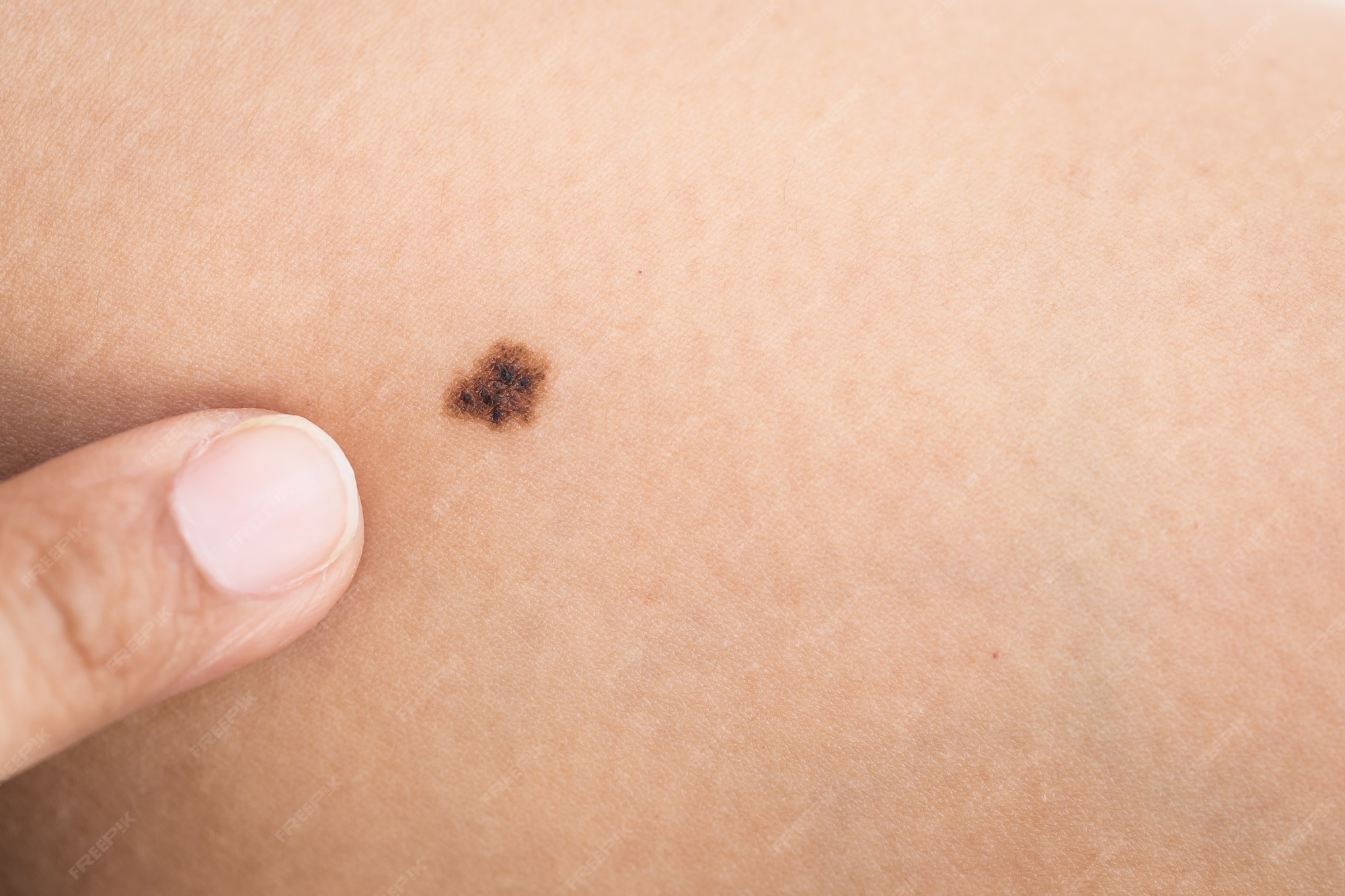
Introduction
Birthmarks are intriguing and often mysterious pigmented marks on the skin, which can vary significantly in shape, size, and color. These unique skin features have fascinated people for centuries, prompting questions about their origins, meanings, and possible medical significance. In this article, we will explore the diverse shapes of birthmarks, their causes, and the myths and facts surrounding them.
Unraveling the Enigma of Birthmark Shapes
I. Hemangiomas: The Strawberry Mark
Hemangiomas, commonly referred to as strawberry birthmarks, are raised, red, or purplish marks resembling ripe strawberries. These birthmarks are caused by an overgrowth of blood vessels and typically appear in infants, growing for several months before gradually fading.
II. Café-au-Lait Spots: Coffee Stains on the Skin
Café-au-lait spots are flat, light-brown birthmarks that resemble coffee stains on the skin. These birthmarks can be of varying sizes and are usually present from birth. While most are harmless, multiple café-au-lait spots may sometimes be associated with genetic conditions.
III. Port-Wine Stains: Shades of Red Wine
Port-wine stains are flat, purplish-red birthmarks that often appear on the face or neck. These birthmarks persist throughout life and are caused by an abnormality in blood vessels. They may darken with age and can be a source of self-consciousness for some individuals.
IV. Mongolian Spots: The Blue-Grey Mark
Mongolian spots are blue or blue-grey birthmarks typically found on the lower back and buttocks of infants. They often resemble bruises but are entirely benign. These marks tend to fade as a child grows and are more common in individuals with darker skin.
V. Angel’s Kiss: The Forehead Mark
Angel’s kisses, or stork bites, are small pink or red birthmarks found on the forehead or the back of the neck. These birthmarks often persist into adulthood but are harmless. The name “Angel’s Kiss” adds a touch of whimsy to their appearance.
Theories and Myths Surrounding Birthmark Shapes
I. Past Lives and Karma
Some cultures believe that the shape of a birthmark reflects actions or events from a past life, carrying a karmic significance. For instance, a birthmark in the shape of an animal may suggest a previous connection to that creature.
II. Genetic and Hereditary Factors
Genetics play a significant role in the formation of birthmarks. Certain birthmarks, like café-au-lait spots, can run in families. However, the specific shape of a birthmark is not directly hereditary.
III. Maternal Imprints
In some cultures, it’s believed that a mother’s thoughts and experiences during pregnancy can influence the shape of a child’s birthmark. For example, a mother’s cravings or fears may be imprinted on the baby’s skin.
Medical Aspects of Birthmarks
I. When to Seek Medical Advice
While many birthmarks are harmless, some may require medical attention. Parents should consult a doctor if a birthmark is rapidly changing, causing pain or discomfort, or if it bleeds.
II. Treatment Options
Treatment options for birthmarks include laser therapy, surgical removal, or medications. These interventions are typically considered for cosmetic reasons or when a birthmark poses health risks.
Conclusion
Birthmarks, with their varied shapes and sizes, remain a topic of fascination and intrigue. While they may carry cultural, mythical, or genetic significance, most birthmarks are harmless and unique. Regardless of their origin or shape, birthmarks are part of the beautiful tapestry of human diversity.
FAQs
1. Can birthmarks change shape over time?
Yes, some birthmarks may change in color, size, or shape as a person grows. Hemangiomas, for example, often shrink and lighten over time.
2. Are there any health risks associated with birthmarks?
Most birthmarks are harmless, but in some cases, they can pose health risks. It’s essential to consult a doctor if you have concerns about a birthmark.
3. Can birthmarks be removed?
Yes, certain types of birthmarks can be removed through medical treatments such as laser therapy or surgical procedures. The decision to remove a birthmark is often based on cosmetic considerations or health concerns.
4. Are birthmarks more common in certain populations?
Birthmarks can occur in people of all ethnic backgrounds, but some types may be more prevalent in specific populations. For example, Mongolian spots are more common in individuals with darker skin.
5. Do birthmarks have any spiritual or symbolic significance?
The interpretation of birthmarks varies across cultures. Some believe they carry spiritual or karmic meanings, while others see them as purely physical phenomena.
